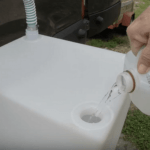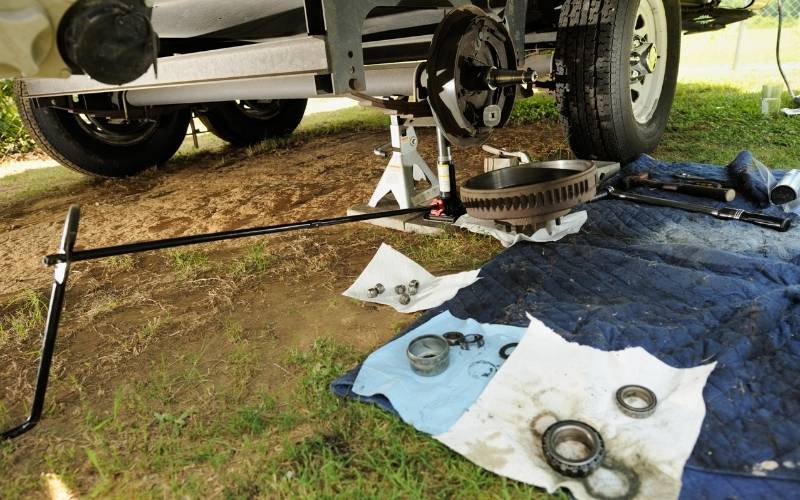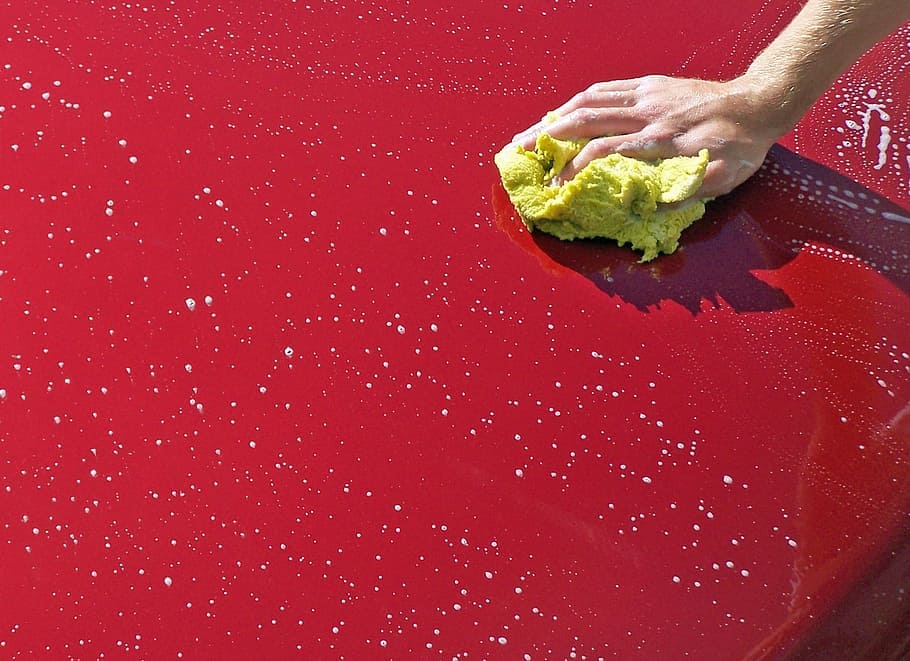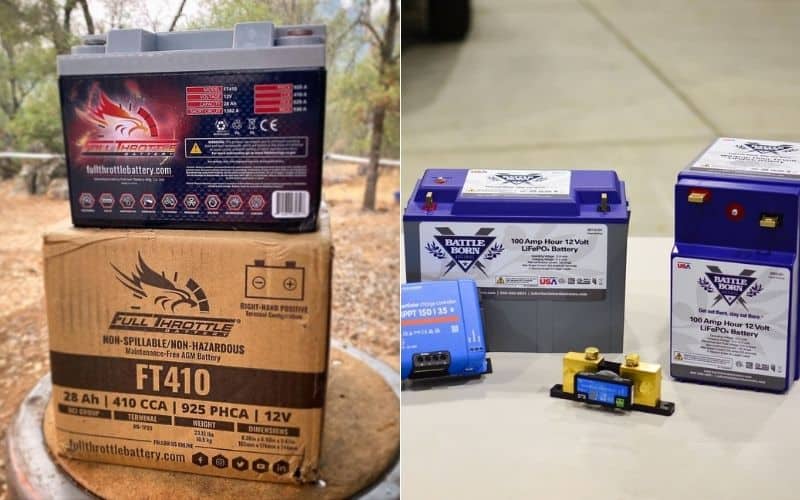An RV’s gray water tank plays an important role in holding the washing water from the kitchen, and bathroom sink as well as the RV’s shower.
It’s separate from the RV’s black water tank which is largely responsible for collecting the water flushed down the toilet. This also means that the RV gray water tank is most likely to fill up first.
This makes knowing how to drain your RV gray water tank very important. While draining grey water tank on an rv is relatively easy, you usually need to empty the black water tank at the same time.
You also need to make sure that you have the proper facilities do to it correctly. Emptying black or gray water tanks inappropriately is not only ecologically dangerous, but it can also come with some relatively stiff fines!
In this article, we’ll take a closer look at an RV’s plumbing system. This includes the basic function of the gray water tank, How to Empty your RV Black and Grey water Tanks properly, as well as how to clean and maintain it.
How Is A Gray Water Tank Plumbed?
Gray water tanks are generally meant to hold the water from the RV shower, as well as the bathroom and kitchen sinks.
While they don’t receive liquid from the toilet, most gray water tanks and black water tanks share the same outlet.
Fortunately, most are designed with separate release valves for each tank. So, if your gray water tank is nearly full, but the blackwater is at less than half, you might be able to get away with simply draining the gray water tank.
How To Drain Black And Grey RV Water Tanks On An RV
Emptying your gray water tank is relatively easy. However, there are a few things you will need to make sure to have on hand first.
Gray water Flushing Equipment
- Hose meant for the RV gray water tank
- Rubber gloves
- Paper towel
- Something heavy to hold the hose down (Optional)
Steps For Draining An RV’s Gray Water Tank
- Back your RV up to the dump station’s disposal tank.
- Double check that your sewer hose will reach with at least 5 to 8 inches of slack to spare.
- Remove the cap from the outlet port that connects the black and gray water tanks.
- Connect the sewer hose to the grey water tank’s relief valve.
- Lead the hose to the input of the dump station’s disposal tank.
- Open the relief valve and let the gray water pour out.
It helps to put a rock or a brick on the hose to keep it from wiggling around under the force of the water exiting.
This is better than trying to step on it with your foot and frees you up to get ready to flush the tank.
How Do I Flush My RV’s Gray Water Tank?
Flushing an RV’s gray water tank plays an important role in extricating any residual material, like stray bits of food leftover after washing dishes, as well as trace microbes which could cause odor problems later on.
There are some RV’s that come with a special flushing filter. While there are different ways to set it up, they all tend to work on the same principle of shunting the volume of the fresh water tank through the gray water tank and into the dump station’s disposal tank.
However, most RV’s require you to manually flush your tank. This is often as simple as running your shower, kitchen, and bathroom taps at wide open while you are still connected to the dump station’s disposal tank. This is where that brick or heavy rock comes in handy!
It would also be helpful to pour a little bleach or another anti-microbial cleanser down a large drain to help kill residual microbes in the line.
There are some RV product manufacturers who sell special oxidizing agents which are reportedly more effective than simple household bleach.
A few are even rated to be organic, which could be handy if you are willing to use your gray water on your lawn.
Deodorizing And Cleaning An RV’s Gray Water Tank
While basic flushing with fresh water and a little bleach, or microbial oxidizer will certainly help minimize odors and keep the tank in good working order, there are still times when you need to give it a more thorough clean.
Especially, if odors have started to build up over time. It’s also a good idea to do this as part of your winterizing in the fall, and again when you get the RV ready the following spring.
There are several tank cleaner products that are specifically formulated for RV gray water tanks.
They also help to break down grease, and other residual materials that can buildup in an RV’s gray water tank.
If you can’t find some, you can get by in a pinch by using bleach and mild soap.
There are some people who even swear by running ice cubes down the shower drain to add a little bit of physical scrubbing action to the process.
When you are ready, you add your chosen deodorizer and any optional ice cubes to the tank with the relief valve closed tight.
Then simply go for a casual drive for half an hour or so. A couple of right turns and few rolling hills will add to the sloshing action inside the tank.
This might also be a good time to pass through the local truck stop to fill up the fuel tanks, or perhaps make a supply run to a grocery store on the other side of town.
When you are ready, you simply empty the water in the tank and flush it through with an equal volume of fresh water.
Is It Bad To Leave Gray Water In The Tank For A Long Time?
If you are boondoggling or doing something like parking your RV for a time to use as a hunting base camp for multiple weekends, the level of your gray water tank will gradually rise with use.
Even something like using the RV park’s shower house, instead of your RV’s shower could extend the time it takes for your gray water tank to fill.
In some of these scenarios, you might be able to go weeks without having to dump and flush your gray water tank.
On the face of it, this isn’t going to damage the structural capacity of the tank. They are specifically designed to handle a full load of liquid weight in the tank.
Where the problem comes in, is bacteria and other microbes that tend to thrive in these often-nutrient rich waters. This can lead to both short-term and long-term odor issues.
As a general rule of thumb, it’s a good idea not to let stagnant gray water sit for more than two weeks. You certainly should dump and flush it at the end of any trip.
Which One Should I Empty First Black Or Gray Water Tank?
A lot of RV travelers simply make it a point to empty and flush both the black and gray water tanks at the same time. Chances are you are already at a dump station, with the facilities right there.
A lot of times, the black water and gray water tank use the same relief hose to empty into the dump station’s disposal tank.
This means that emptying the black water tank first will let you use the much cleaner gray water to essentially rinse any lingering traces of black water out of the hose itself.
Does My Gray Water Tank Need To Be Full Before I Empty It?
Technically, you can dump the gray water tank at any time. However, letting it fill up will increase the gravity-fed pressure that helps push the gray water through the hose.
This is especially helpful if you’ve recently emptied the black water tank first!
Is It Possible To Drain A Grey Water Tank Without Hooking To Dump Station?
No pun intended, but this is a little bit of a gray area. In some states, gray water from an RV tank must be emptied into an official dump station.
In other states gray water might be used to do things like water something like your lawn. However, you need to first think about what might be in your gray water tank.
Grease and food debris from washing plates in the kitchen or running the dishwasher can leave quite an unexpected mess in your lawn.
No to mention if the water has been in the tank for more than a week, the smell might cause the neighbors to complain.
It’s also worth bearing in mind that non-organic soaps, even from simply washing your hand can alter soil chemistry and even prove harmful to your grass.
So, unless you are very thoughtful about what goes into your gray water tank, and you’ve been paying attention, you should probably make it a point to only empty your gray water at a licensed dump station. Most of the time the fee is minimal.
There are some municipalities who will let you dump gray water directly into their established sewer system.
Just make sure to check with the public utility department, rather than risk pointing your gray water sewer hose at a nearby storm drain.
In Conclusion
Your RV’s gray water storage tank might seem like the sort of thing you can keep low on the priority list.
Still, I think you’ll find that it’s relatively easy to empty, flush and maintain.
Giving it the respect it deserves on your “To-Do List” not only keeps away odor issues, but it also reduces the chances of a drain catastrophically backing up from grease and any other residue.
Just make sure you have everything you need to do the job right. Whenever possible it’s best to empty the gray water into a licensed dump station, or a municipal sewer facility.
Then make it a point to give it a thorough flush and cleaning to keep things flowing smoothly.

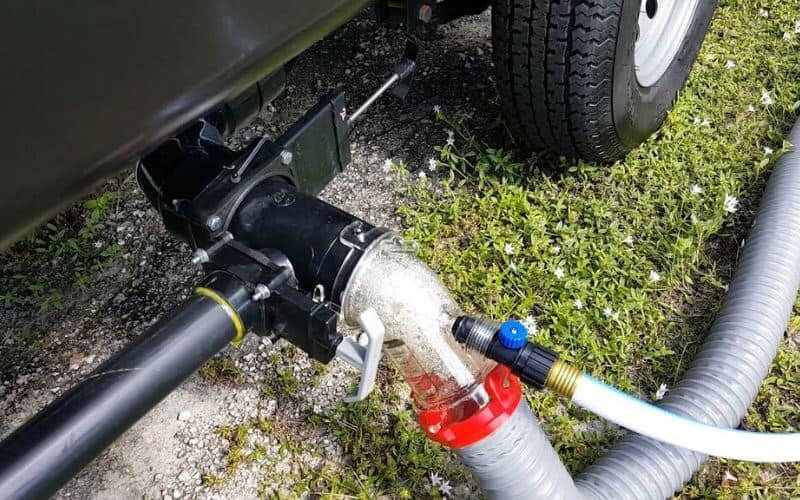
![10 Best Lightweight Toy Hauler Travel Trailers on The Market in [currentyear] 2 10 Best Lightweight Toy Haulers In 2019](https://www.rvingknowhow.com/wp-content/uploads/2019/12/10-Best-Lightweight-Toy-Haulers-In-2019-150x150.jpg)
